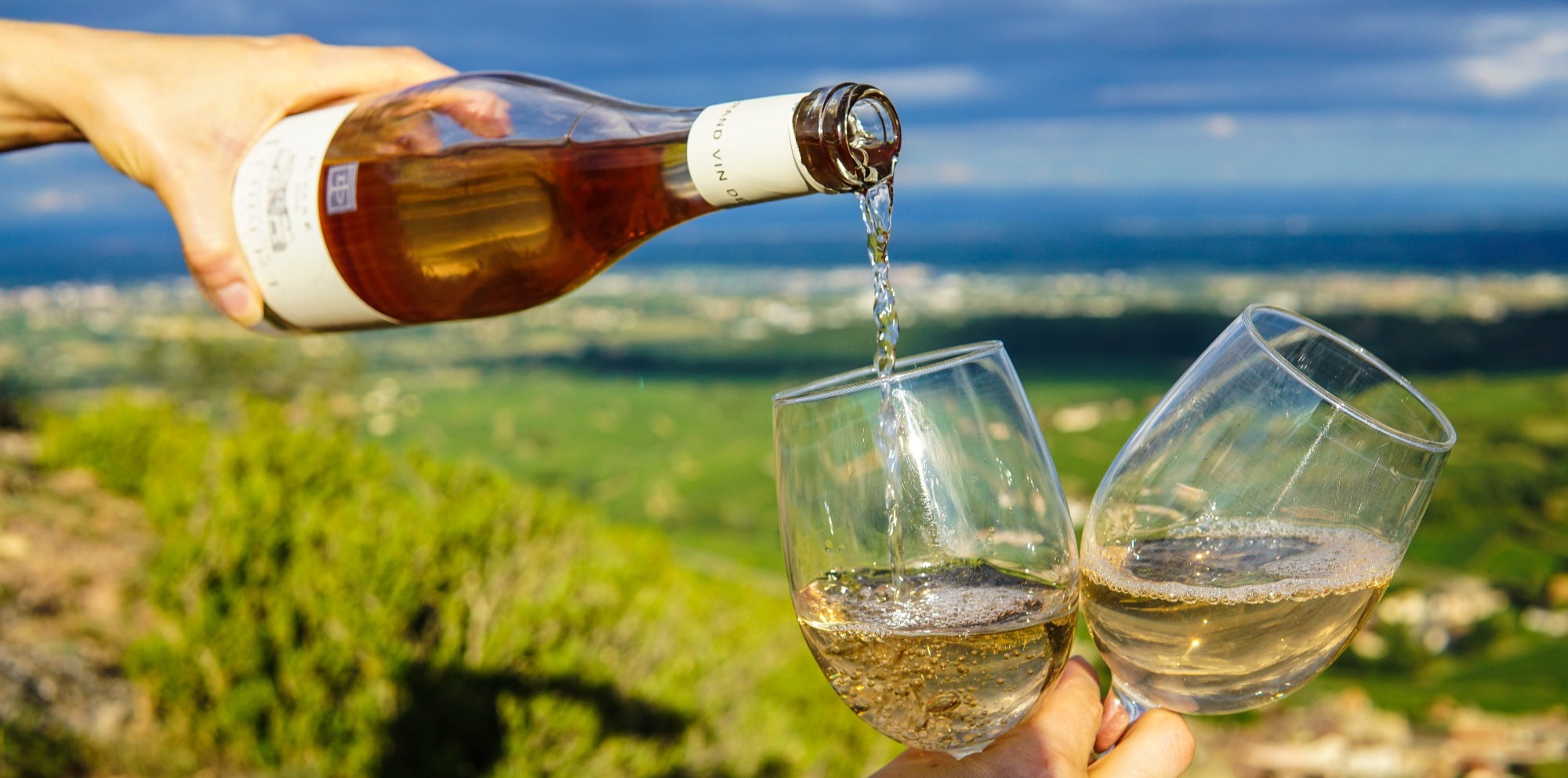The Traveler's Guide to French Food and Wine from Azamara
By TRAVELINK on February 17, 2023
From foie gras to boeuf bourguignon, and all kinds of delicious pastries in between, France is world-renowned for its delicious food. It is, after all, the country that coined the term ‘Haute Cuisine’. Producing over eight billion bottles of wine a year — from Champagne and fifteen other wine regions — France is also home to some of the world’s best wines. Study up on our guide to French food and wine, and on your next Azamara voyage to France, you’ll dine comme un rois (like a king).
THE FOOD AND WINE OF NORTHERN FRANCE
Along the French northern coast sit the regions of Brittany and Normandy — each with their own signature flavors waiting for you to discover. Both cuisines feature bountiful arrays of fresh seafood, including langoustines, plump oysters and more. The next time you find yourself in Honfleur, St. Malo, Brest, Cherbourg, or Nantes, look for the following dishes and drinks.
Camembert: This is a soft and creamy cow’s milk cheese from Normandy. Delicious at room temperature, it also becomes wonderfully soft when melted.
Cider: For many, the first food that comes to mind when thinking of France is grapes, but the north is home to another famous for another fruit — apples. That’s why here, instead of wine, locals produce cider. Apples are fermented to offer a delicious and slightly fizzy cider drink. Just like wine, you can find both dry and sweet types of cider. Normandy is also known for Calvados, a strong apple brandy. Try a tipple as a digestive.

Crêpes: Brittany is home to some of the best crêpes in France, which puts them high in the running for best crêpes on Earth. In France, savory crêpes are called galettes. They’re made with buckwheat, a grain grown in the region, and often feature ham and cheese as classic fillings. But on menus across the region, you’ll also find galettes filled with eggs, seafood, or vegetables. For dessert, sweet crêpes are made with flour. Popular fillings include lemon, sugar, and Nutella. Then, of course, there’s the classic Crêpes Suzette, where the crepes are flambéed in a caramelized sauce of sugar, orange juice, and orange liquor. Simply put, when traveling through Northern France, don’t miss your opportunity to sample these different styles of crêpes. Try them all paired with cider on our Sant-Malo On Foot & Crêpes shore excursion.
Far Breton: A dense, flan-based cake from Brittany that’s studded with prunes.
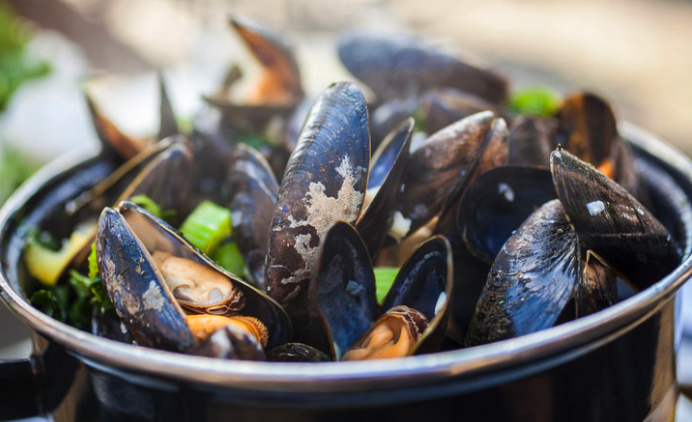
Moules Marinières: In this classic dish from Brittany, fresh-from-the-sea mussels are gently steamed in a mixture of garlic, shallots, leeks, cider or white wine, and sometimes a little mayonnaise. Neighboring Normandy has a similar dish, moules a la Normande, where instead of mayonnaise, double or heavy cream is added, making the dish extra indulgent. With either version, make sure to ask for a crusty baguette to sop up the delicious sauce.
Kouign-Amann: You don’t judge a book by its cover, and you shouldn’t judge this pastry by its look. Admittedly plain in appearance, it’s what’s on the inside that counts for this delicious dessert. It’s made from yeasted dough folded with lots of butter and sugar to bake a dense yet flaky pastry that’s wonderfully caramelized from all of the sugar. Kouign-amann has been described as “The fattiest pastry in all of Europe”. Trust us when we tell you that is most certainly a compliment.
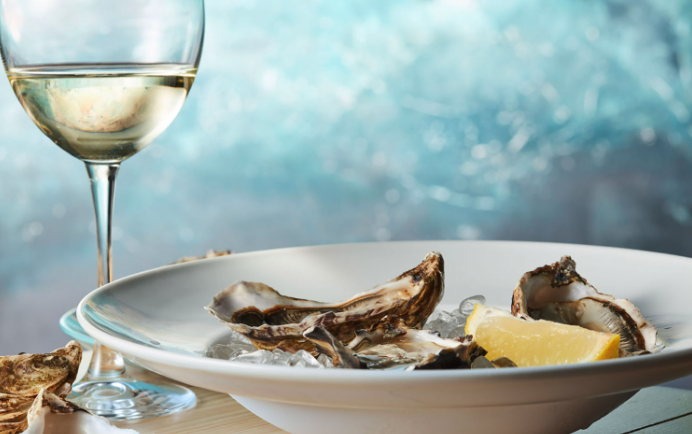
Oysters: You either love or hate these briny mollusks. For those who love them, Brittany is an oyster mecca, producing over 60,000 pounds of the delicacy every year. They are best enjoyed raw, with a squeeze of lemon and a splash of mignonette sauce. For the freshest and tastiest oysters, enjoy them in season — any month with an “r” in it (September–April). Brittany, France is an oyster mecca, producing over 60,000 pounds of the delicacy every year.
Sables: From Sablé-sur-Sarthe in Normandy, sables are the French version of shortbreads. Delicious and buttery, these round cookies have a crumbly and sandy texture.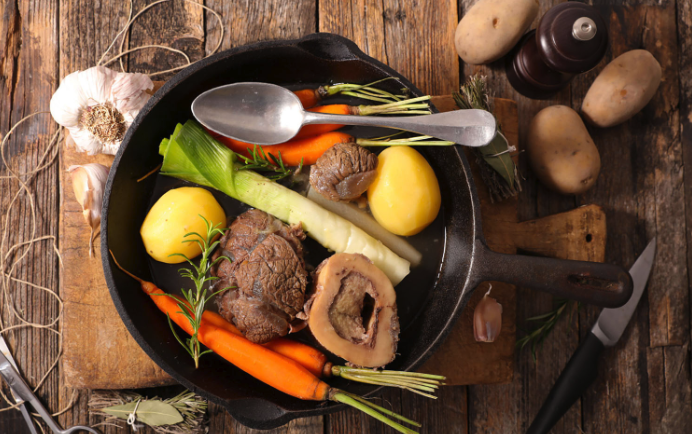
Pot-au-Feu: One of the ultimate comfort food dishes for the French, pot-au-feu is a hearty French beef stew, where cheap cuts of beef are braised for a long time with root vegetables. After a day exploring the D-Day beaches near Saint-Malo and Cherbourg, this is the perfect meal to way to end the day.
Fleur de Sel: Salt may not be a French food per se, but we couldn’t talk about northern France without mentioning this prized sea salt. Harvested by hand from marsh basins, this salt has a unique shape, and the taste is said to linger longer — providing additional flavor and making a great finishing salt. Fleur de sel makes a great souvenir to keep in your kitchen or bring to loved ones.
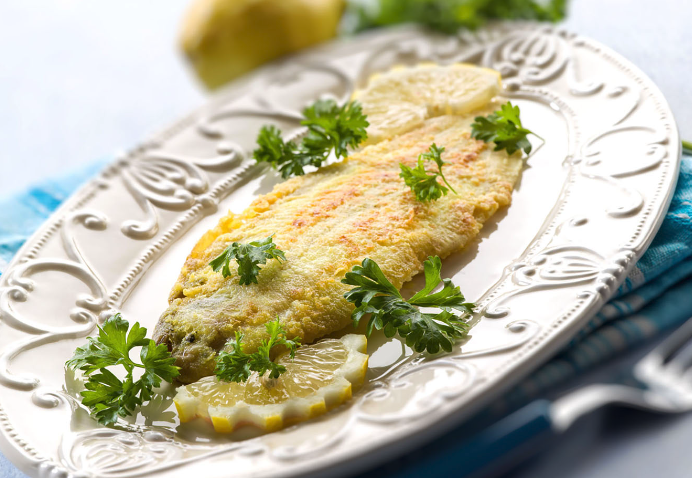
Upon arriving in Rouen, Julia Child’s first taste of French food was sole meunière, and it sparked her lifelong love affair with the country’s cuisine.
Sole Meunière: Whole sole (preferably Dover sole) is pan-fried in lots of butter and finished with lemon and parsley. When served at a restaurant, it’s deboned for you, tableside. Upon arriving in Rouen, Julia Child’s first taste of French food was sole meunière, and it sparked her lifelong love affair with the country’s cuisine. Order this dish on your next visit to France, and perhaps it will work its magic on you too.
If you’re ready to say “oui” to the journey of a lifetime, take a look at Azamara's 2023 voyages to France and the surrounding areas of the Iberian Peninsula to discover the perfect food & wine itinerary for you. Send us a trip request when you're ready to start planning!

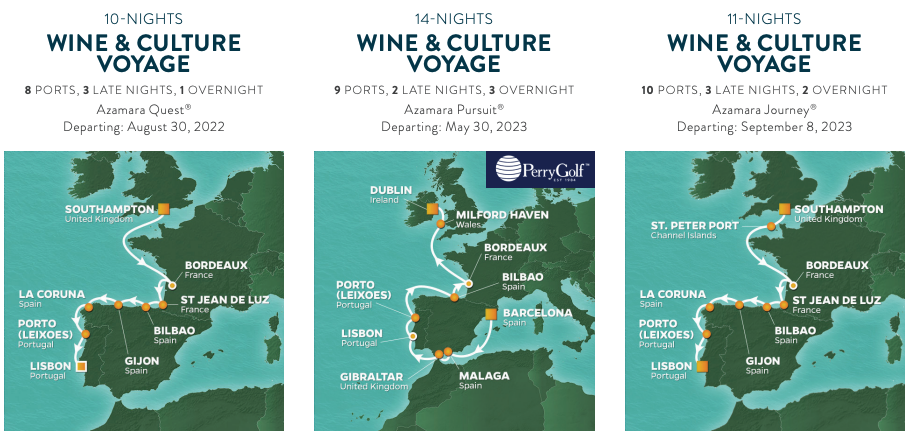
Take an overnight journey through Bordeaux, France, with two days of onsite learning about wine production, or travel to Porto, Portugal, and sample petiscos and Port in the scenic Douro Valley. Experience the foodie’s playground of Bilbao, Spain, and the region’s prize wine, txakoli — a light, aromatic white wine aperitif that pairs wonderfully with the city’s seafood-forward tapas.
Whether your passion for viticulture is perfectly aged or just budding, each of these three voyages showcases the mighty grape in all its rightful glory.
THE FOOD AND WINE OF SOUTHERN FRANCE
Southern France is known for its abundant sunshine. In fact, with an average of 304 days without rain per year, Sanary sur Mer is said to be the sunniest place in all of France. Thanks to its mild climate and easy access to the sea, the cuisine of southern France is ripe with fresh produce, crisp wines, and Mediterranean influences. The Provencal cuisine you'll find uses fewer sauces and more fresh herbs than other regions in France — resulting in a flavorful foodie style all its own.
Here are a few favourites you must keep your eyes open for during your French adventure.
Bouillabaisse: This well-known fish stew hails from the port city of Marseilles. Local fish like turbot, red rascasse, and mullot are cooked together with shellfish, including mussels and spider crab, plus leeks, potatoes, celery, and tomatoes in a broth seasoned with garlic, onions, and herbs de Provence. Traditionally the dish is served in two courses — the broth first, followed by the fish. These days, however, it's common to have them served together. To really explore the city's deep connection to the sea (and sample some delectable local dishes), set out on our Embrace the Flavors of Marseilles shore excursion.
Brandade de Morue: In the south of France, this is a common dip made from modest ingredients of emulsified salted cod and olive oil, then elevated by whipping into a delicious spread served either with bread or potatoes.
Ratatouille: A staple in Nice, this vegetarian favorite became one of France's best-known dishes after the release of the 2007 Disney classic, Ratatouille. A stew made from local vegetables, including tomatoes, zucchini, eggplant, bell peppers, onions, seasoned garlic, and herbes de Provence, the French have been cooking ratatouille since the mid-1900s (though that name did not appear in print until the 1930s).
Côtes du Rhône Wines: This southern wine region produces reds, whites, and rosés. Most of the reds and rosés are made from the Grenache grape. Grenache wines are spicy in flavor, low in acidity, and high in alcohol content. The white wines of Côtes du Rhône are made from the Grenache Blanc grape, typically resulting in a citrusy flavor. Similar to the region’s reds and rosés Grenache Blanc-based wines are high in alcohol.
Rosés: Pink-hued rosés are made from red grapes but only contain a partial amount of the grape skins. In Provence, rosé makes up two-thirds of all wine production. While pink wines are often assumed to be sweet, in this region, most of the rosés are very dry. Rosés are meant to be served ice-cold, which is perfect for warm and sunny locals such as Saint Tropez. When you arrive, grab an outdoor chair at a café and say "yes way" to the rosé.
Soup au Pistou: Liguria, in Italy, is famous for its pesto, but along France's Cote d'Azur, it's all about pistou. Like pesto, pistou is a thick sauce made from garlic, along with lots of basil and cheese. However, unlike pesto, pistou doesn't contain any pine nuts. In this Provencal dish, a vegetable soup with white beans is served with a giant dollop of pistou.
Salade Niçoise: A fantastic lunchtime meal, Salade Niçoise was invented in Nice, France. The salad ingredients include fresh tomatoes, olives, anchovies, hard-boiled eggs, and tuna, all dressed with olive oil. While the main ingredients stay the same, there's still plenty of room for variation. The tuna can be fresh or canned, the salad can be served warm or cold — the possibilities are almost endless. But the dish definitely has its purists. Just ask a local about cookbook author August Escofier's addition of potatoes and green beans — this "innovation" is still a topic of debate a century after it was introduced!
Socca: Another specialty of Nice, socca is a local street food favorite. It's a simple flatbread made from chickpea flour, water, and olive oil that's poured into a hot pan and baked. The Boulevard Promenade de Anglais is the perfect place to sample some socca from a market vendor. You can search it out for yourself there on Azamara's Wine Tasting at Cave Bianchi shore excursion.
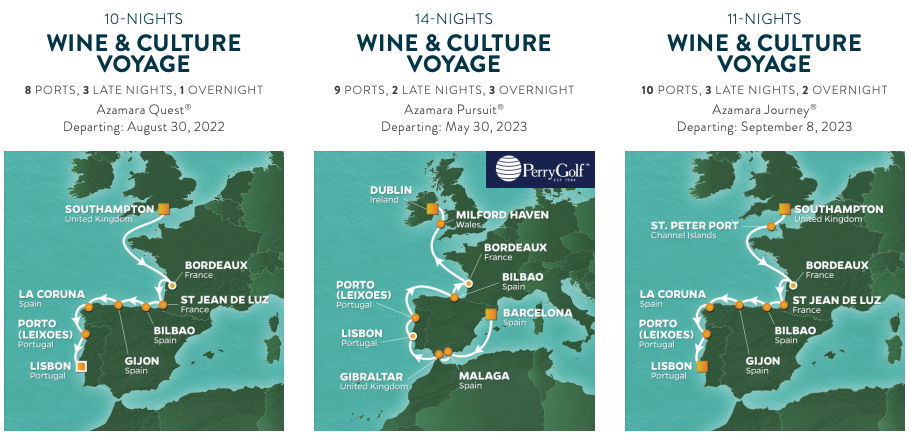
THE FOOD AND WINE OF WESTERN FRANCE
French and Spanish flavors mix with fresh seafood in the Basque region, and Bordeaux is prized for its fine wines and comforting and hearty cuisine. If you'd like to sample the famed Bordeaux wines, the port city has many cafes and wine bars to choose from. Or you can head out into the countryside and visit a few of the region's wine chateaus.
Bisque: Often, creamy soups are blanketly referred to as bisques, but that's not an entirely accurate description for many of them. A traditional bisque soup is made from a strained shellfish broth (ideally with shellfish fresh from the Bay of Biscay), thickened until nice and creamy. Tomato paste is often added to bisques for flavor and color.
Bordeaux Wines: Bordeaux is the largest wine-producing region in France, with 90% of production going towards red wine. Most of the red wines in Bordeaux are blends, where different types of grapes are combined together. To be an authentic red Bordeaux, the wine must contain at least two of the following three types of grapes: Cabernet Sauvignon, Cabernet Franc, and/or Merlot. The rest of the world has taken note of this medley - in fact, it's the most copied blend globally! Like the reds, most of the white wines from Bordeaux are also blends, mainly from the Sauvignon Blanc, Sauvignon Gris and Semillon grapes.
Canelé: This cylinder-shaped vanilla and rum-flavored pastry is a decadent specialty of Bordeaux. The pastry batter is poured into a mold that's been brushed with beeswax or butter, giving the canelé a dark, crusty exterior. Meanwhile, the inside is creamy, almost like a custard. Served warm, this pastry is a blissful treat.
Piperade: A vegetarian dish from the Basque region, piperade is made with sautéed tomatoes, onions, and green bell peppers. It's typically flavored with piment d'Espelette, a regional (mild) chili pepper flake seasoning made from Espelette peppers. It's interesting to note that the colors of this dish reflect the Basque flag, though this is said to be mere coincidence.
Cassoulet: Rich and hearty, cassoulet is a meaty casserole made from different types of meat, including duck or goose confit, pork skin, and white beans. All of the ingredients are cooked together, low and slow in a cassoulet dish.
Roquefort: White and crumbly with veins of blue mold running through it, Roquefort is a blue cheese made from sheep's milk. It gets its name and distinction from being aged in the caves of Roquefort-sur-Soulzon. The cheese's strong odor and flavor pairs well with bold red Bordeaux wines, and is perfect at a restaurant or park picnic.
Chèvre: This French goat's milk cheese is white in color, and tart and tangy in its flavor. Chèvre can range in texture from soft to firm depending on the moisture content of the cheese and how long it's been aged. The longer the cheese has been aged, the bolder the flavor. Look for it on charcuterie boards!
Sauternes: This is a sweet wine with a distinct, dark yellow color from Bordeaux. This wine gets its sweetness from grapes that are raisined from a fungus. This process is known as "the noble rot," which honestly, tastes much better than it sounds. Sauternes are often served chilled with or as dessert, but the wine also pairs well with foie gras, which can learn more about below.
Foie Gras: From the Dordogne region, foie gras is a world-famous French delicacy made from the liver of ducks or geese that have been fattened by being force-fed. This, admittedly controversial, technique is said to make the live taste extra rich and buttery. Foie gras can be served cold as a pate, or whipped into a mousse. It can also be served warm by pan roasting the liver for a more comforting touch.
Steak Frites: One of France's most popular dishes, steak frites is a bistro classic consisting of a juicy steak served along a side of French fries. The cut of steak can vary, but an entrecote (ribeye) is typical. The French tend to serve their steaks rarer (saignant) than in America, so here's a short guide to doneness when ordering:
Bleu – extremely rare
Saignant – very rare
A’ Point – rare to medium-rare
Bien Cuit – medium to well-done


About the author
TRAVELINK
TRAVELINK is headquartered in Nashville, Tennessee and operates nationally with a combination of boutique business call centers and a national network of experienced virtual business travel and leisure travel advisors. Travelink’s client base includes a range of Fortune 500 Corporations, small to mid-market companies, as well as clients from the entertainment industry, sports teams, groups, and religious & non-profit organizations.
Topics: New, Cruises, Europe, Food + Culture
